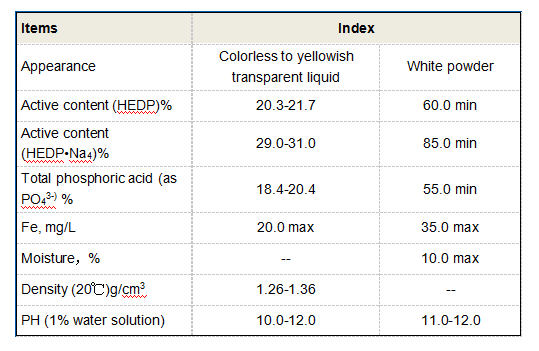hydrolyzed polyacrylamide
Hydrolyzed Polyacrylamide Applications and Benefits
Hydrolyzed polyacrylamide (HPAM) is a water-soluble polymer derived from the polymerization of acrylamide and its subsequent hydrolysis. It has gained significant attention in various industries due to its unique properties and functionalities. This article explores the characteristics, production methods, and diverse applications of hydrolyzed polyacrylamide, highlighting why it has become a vital component in many fields.
Properties of Hydrolyzed Polyacrylamide
HPAM is characterized by its high molecular weight and ability to form viscous solutions in water. The degree of hydrolysis can significantly affect its behavior and performance in different applications. Hydrolyzed polyacrylamide is typically classified based on its hydrolysis level partially hydrolyzed polyacrylamide (PHPA) and fully hydrolyzed polyacrylamide (FHPA). PHPA retains some unhydrolyzed acrylamide units, which contributes to its viscosity and effectiveness in various applications.
The polymer exhibits excellent flocculation properties, meaning it can aggregate fine particles in a liquid, causing them to settle more rapidly. This property is particularly valuable in processes involving sedimentation, filtration, and clarification. Additionally, HPAM is non-toxic and environmentally friendly, making it suitable for use in sensitive applications, such as in water treatment and agriculture.
Production Methods
The production of hydrolyzed polyacrylamide involves several steps. Initially, acrylamide monomers are polymerized, often in an aqueous solution, using free-radical initiators. After polymerization, the resulting polyacrylamide is subjected to hydrolysis, which involves the application of heat and the presence of hydroxide ions to convert some of the amide groups into carboxyl groups. The extent of hydrolysis can be controlled to achieve the desired properties for specific applications.
Applications of Hydrolyzed Polyacrylamide
hydrolyzed polyacrylamide

1. Water Treatment One of the most significant applications of HPAM is in water treatment processes. Its flocculating properties make it effective for removing suspended solids, colloids, and turbidity from water. HPAM is used in municipal water treatment facilities, wastewater treatment plants, and in industrial applications to clarify water and improve overall quality.
2. Oil and Gas Industry HPAM is extensively used in enhanced oil recovery (EOR) techniques. In this context, it acts as a viscosifying agent, helping to improve the mobility of water injected into oil reservoirs. The polymer helps to sweep more oil towards production wells, thereby increasing overall extraction efficiency. Additionally, HPAM is used in drilling fluids to stabilize boreholes and reduce fluid loss.
3. Agriculture In the agricultural sector, hydrolyzed polyacrylamide serves as a soil conditioner. It improves soil structure and enhances water retention, reducing the need for frequent irrigation. HPAM also assists in reducing soil erosion and helps maintain soil moisture levels, leading to improved crop yields and sustainable farming practices.
4. Pharmaceuticals and Personal Care HPAM is also utilized in the pharmaceutical and personal care industries as a thickener and stabilizing agent in formulations. Its ability to enhance the viscosity of liquids makes it suitable for gels, creams, and lotions, providing the desired consistency and texture.
5. Cosmetics In cosmetics, HPAM is prized for its ability to form a smooth film on the skin, enhancing the feel of products. It is commonly used in moisturizing creams and makeup formulations, where its properties contribute to a pleasant application experience.
Conclusion
Hydrolyzed polyacrylamide is a versatile polymer with a broad range of applications across various industries. Its unique properties, customizable production methods, and eco-friendly nature make it a valuable component in water treatment, enhanced oil recovery, agriculture, and personal care products. As industries continue to seek sustainable and effective solutions, HPAM's significance is expected to grow, paving the way for innovations and advancements in numerous fields. With ongoing research and development, the potential applications of hydrolyzed polyacrylamide will likely expand, further illustrating its importance in modern technology and sustainability initiatives.
-
Dodecyldimethylbenzylammonium Chloride: High-Purity DisinfectantNewsAug.30,2025
-
2-Phosphonobutane-1,2,4-Tricarboxylic Acid: Scale & CorrosionNewsAug.29,2025
-
Premium Isothiazolinones | Broad-Spectrum Biocidal SolutionsNewsAug.28,2025
-
LK-319 Special Scale And Corrosion Inhibitor For Steel Plants: Advanced Solutions for Industrial Water SystemsNewsAug.22,2025
-
Flocculant Water Treatment: Essential Chemical Solutions for Purification ProcessesNewsAug.22,2025
-
Isothiazolinones: Versatile Microbial Control Agents for Industrial and Consumer ApplicationsNewsAug.22,2025





